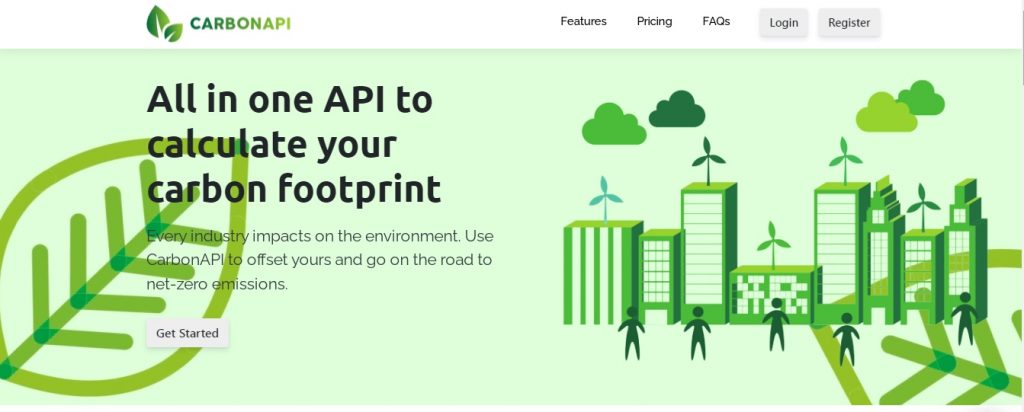If you are in a hospital and you want to collaborate in reducing the institutional Carbon footprint, you should calculate it with an API.
On the path to sustainability, hospitals have one massive goal in mind: being carbon neutral – reaching net-zero carbon dioxide emissions. While the goal is long, difficult, and laden with difficulties, hospitals need to embrace sustainability owing to the magnitude of their carbon footprint and their basic dedication to health and healing.

What is the carbon footprint of health care? To put this in context, if the global health care industry were a country, it would be the fifth-largest producer of greenhouse gasses in the world. The global health care business emits two gigatonnes of CO2 each year, accounting for 4.4 percent of global net emissions – the equivalent of 514 coal-fired power plants.
While the financial system, competition for capital resources, and top-down assistance for environmental projects are continual obstacles, the good news is that many hospitals are making real progress by implementing effective, productive, and often cost-effective sustainability measures in three major areas: energy, waste, and supply chain.
A climate action plan, as well as buy-in from hospital leadership and selected personnel who are enthusiastic about environmental conservation, are vital to success. On their way to becoming carbon neutral, hospitals follow the Greenhouse Gas Protocol organization’s rules for assessing emissions, which are separated into three scopes:
Scope 1: Direct from a firm’s own or regulated sources.
Scope 2: Indirect from acquired energy.
Scope 3: All additional emissions resulting from a company’s operations.
However, you cannot manage what you do not measure. Hospitals must identify their energy use per square foot, compare it to peers, and then determine what energy-saving strategies may be undertaken. Most hospitals establish carbon-neutrality objectives for the next 10 to 20 years, focusing on sectors such as energy, waste, supply purchasing, water, food, and others. They also frequently create smaller, even grassroots, initiatives to propel change.
Which Tool Is Necessary To Do It?
A technology that assists in the monitoring of a hospital’s carbon footprint is an application programming interface. An API is a means of data transfer that allows data to be exchanged from one device to another. There are many sites on the Internet, but not all of them can help you reduce your environmental impact. Finally, we offer Carbon API as the ideal tool for achieving this goal.
CarbonAPI is a free CO2 tracker that can help you track and decrease common pollution. This gadget will monitor your energy use and automatically compute your greenhouse gas emissions. You may also show your class the API result to show how you are lowering your environmental effect.

How Do I Determine a Hospital’s Carbon Footprint?
1. Sign up at www.trycarbonapi.com.
2. After inputting the Endpoint documents, fill up the blanks with your data. Choose the category for which you wish to calculate.
3. Consider the amount of energy used by a hospital, for example.
4. The API is now operational when you click the run button.
More About CarbonAPI
CarbonAPI assists businesses and people in calculating and reducing their environmental footprint. It is free and can keep track of your cuts. Because of its deep roots in environmental activism and renewable energy, its Platforms enable developers to give clients precise carbon emissions forecasts.
CarbonAPI enables you to take positive, concrete steps to mitigate climate disaster. It is a simple and low-cost method of completing your environmental reporting obligations. It is versatile and may be customized to meet your individual needs. Climate action, also known as environmentally sustainable management, refers to an organization’s goal of having the least possible environmental impact.

